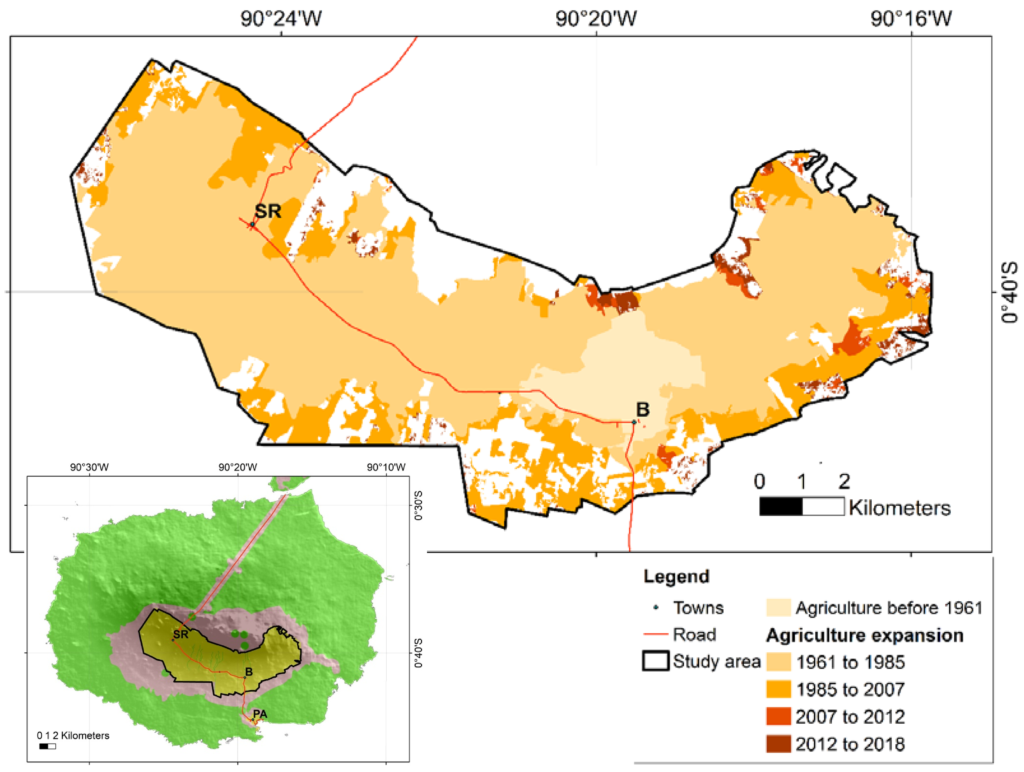Islands are particularly vulnerable to the effects of land cover change due to their limited size and remoteness. This study analyzes vegetation cover change in the agricultural area of Santa Cruz (Galapagos Archipelago) between 1961 and 2018.
To reconstruct multitemporal land cover change from existing land cover products, a multisource data integration procedure was followed to reduce imprecision and inconsistencies that may result from comparing heterogeneous datasets. The conversion of native forests and grasslands into agricultural land was the principal land cover change in the non-protected area. In 1961, about 94% of the non-protected area was still covered by native vegetation, which decreased to only 7% in 2018. Most of agricultural expansion occurred in the 1960s and 1970s, creating an anthropogenic landscape where 67% of the area is covered by agricultural land and 26% by invasive species. Early clearance of native vegetation occurred in the more accessible, less rugged areas with deeper-than-average and well-drained soils. The first wave of settlement consisted of large and isolated farmsteads, with 19% of the farms larger than 100 ha and specializing in dairy and meat production.

Over the period of 1961–1987, the number of farms doubled from less than 100 to more than 200, while the average farm size decreased from 90 to 60 ha/farmstead. Due to labour constraints in the agricultural sector, these farms opted for less labour-intensive activities such as livestock farming. New farms (popping up in the 1990s and 2000s) are generally small, with <5 ha per farmstead, and settled in areas with less favourable biophysical conditions and lower accessibility to markets. From the 1990s onwards, the surge of alternative income opportunities in the tourism and travel-related sector reduced pressure on the natural resources in the non-protected area.
More information in https://www.mdpi.com/1711014
Alomía Herrera, I.; Paque, R.; Maertens, M.; Vanacker, V. History of Land Cover Change on Santa Cruz Island, Galapagos. Land 2022, 11, 1017. https://doi.org/10.3390/land11071017
